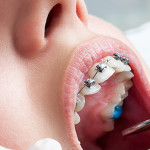Antibiotics: Use And Abuse
Article By Dr. Ving J. Lee | Featured on Dear Doctor
Maintaining the Right Balance in the Fight Against Disease
Imagine a world without antibiotics: The cut on your finger might lead to serious infection; the simplest operation could be a perilous undertaking; there would be no effective cures for tuberculosis, cholera, strep throat or sexually transmitted disease; and bacterial meningitis in a child would likely be fatal. It may seem hard to believe, but a century ago — before antibiotic drugs became widely available — these risks were very real.
These omnipresent drugs have been hailed as one of the most significant medical achievements of the 20th Century. However, in recent years, a disturbing trend has been noted throughout the world: The life-saving drugs we once relied on are now less effective at fighting the organisms that cause disease.
Although we tend to think of antibiotics for human use, many are also used in raising animals for food. Yet widespread agricultural use of antibiotics can stimulate increased drug resistance in both animals and humans. It can also cause a spillover of antibiotics into the environment, where we are exposed to them unintentionally.
According to public health agencies like the World Health Organization (WHO), and the U.S. Centers for Disease Control (CDC), the threat posed by antibiotic resistance is not a prediction for the future; it’s happening right now.
According to public health agencies like the World Health Organization (WHO), and the U.S. Centers for Disease Control (CDC), the threat posed by antibiotic resistance is not a prediction for the future; it’s happening right now. In fact, a recent executive order signed by President Obama directs federal agencies to pursue strategies to curb the misuse of antibiotics. But fighting this battle effectively will require the concerted efforts of pharmaceutical companies, health care providers, policy makers, and the public.
How did we get here?
The name antibiotics (“anti” – against; “biosis” – life) is itself a clue to what these substances can do. Capable of controlling various types of microbes, they may be classified as antibacterials, antifungals, antivirals, and antiparasitics — but by far the most commonly prescribed antibiotics are the antibacterials. Some are broad-spectrum drugs, acting against a wide variety of organisms; others are narrow-spectrum, and work for only a few.
Antibiotics aren’t exactly new — in fact, ancient civilizations treated some diseases with mixtures of molds, soil and plant materials that possess germ-killing properties. But their systematic development to fight harmful microbes began about 100 years ago.
Around the turn of the 20th century, Paul Ehrlich, a German chemist, observed that certain dyes colored some types of cells, but not others. He reasoned that there might be other substances that could act on cells selectively — only killing bacteria, for example, but leaving human cells alone. He called these proposed chemical agents “magic bullets,” and set out to find one. The drug he discovered, Salvarsan, became the first effective cure for syphilis.
In the late 1920s, Alexander Fleming, a British medical researcher, noticed that mold contamination of his bacterial cultures actually killed the bacteria.
In the late 1920s, Alexander Fleming, a British medical researcher, noticed that mold contamination of his bacterial cultures actually killed the bacteria. In fact, molds were long suspected of having bactericidal properties, but it was Fleming’s tireless pursuit of a bacteria-killing drug that eventually paid off. The medication he pioneered, Penicillin, was first used to treat soldiers in World War II. Becoming broadly available in 1945, this wildly popular “wonder drug” helped usher in the antibiotic revolution.
Use and Misuse
The period from the 1950s through the ‘70s is sometimes called the “golden age” of antibiotics. Many new classes of antibiotic drugs were developed, and they were arguably prescribed rather indiscriminately. This led to the misconception among some patients that antibiotics would work for any ailment, and would always be given. It also led some doctors to adopt a “better-safe-than-sorry” approach, even if it wasn’t certain that the drugs would be of value in a particular case. Antibiotics were also recommended as preventive measures when there was risk of infection, and were often given for viral infections, like colds and flu — for which they are not effective at all.
In addition — and perhaps what’s most unsettling — they have made their way increasingly into the food chain, as feed additives for animals, designed to prevent disease and promote faster growth; and into the environment, as ingredients in cleaning products and trace contaminants in water. And gradually, that has led to notable change.
Significant Risks — Superbugs
The indiscriminate use of antibiotics has been a bit like using a sledgehammer to crack a nut — these powerful drugs not only kill disease-causing organisms, but also beneficial bacteria that are necessary for health. And some antibiotics can also elicit allergic responses, which can sometimes be life threatening.
Moreover, a rise in certain types of bacterial infections has been noted in recent decades, with the rise of so-called superbugs. Methicillin-resistant Staphylococcus aureus (MRSA) infection is caused by a strain of bacteria that has become resistant to commonly used antibiotics. And Clostridium difficile, as its name implies, is a bug that is insensitive to most of them. This severe colon infection is typically due to long-term use of broad-spectrum antibacterials. Since the start of the first Iraq War, soldiers have suffered infections with species of Acinetobacter. These bacteria, normally resident in soil, are also being seen in infections of more debilitated hospitalized patients.
The alarming increase in these cases in recent years — and the rise in other so-called nosocomial (hospital-acquired) infections — point to a growing trend: Bacteria are developing resistance to the very drugs we use to fight them. In fact, this is Darwin’s theory of evolution at work; while a chemical substance may kill most all of the bacterial population, the cells that survive can pass their resistance on to their offspring.
And this isn’t the only risk involved with antibiotics. When commonly used first-line medications fail to control an infection, second and third-line antibiotics may be needed. These drugs tend to have more side effects (including increased toxicity to patients), and are frequently more expensive. According to the CDC, more than two million people each year incur antibiotic-resistant infections; about 23,000 will die as a result. Many more will suffer allergic reactions to antibiotic medications, some of which can be quite serious.
Combating Antibiotic Resistance
The problem of antibiotic resistance and the threat it poses to public health is globally recognized. A recent report from the WHO warns that without coordinated action, we may be headed toward a “post-antibiotic” era, when common diseases and minor infections could once again be deadly. Researchers have no doubt that the overuse of antibiotics contributes to the problem of resistance.
A recent CDC report observed that there was a wide discrepancy from hospital to hospital in terms of the quantity of antibiotics prescribed. The report also estimated that cutting antibiotic use by 30 percent would reduce some hospital-acquired infections by a similar percentage. Thus, curbing the overuse of antibiotics will require help from many quarters.
For health care providers, the challenge will be to reduce the amount of unnecessary antibiotics prescribed. One way to accomplish this is with better testing, including more widespread use of laboratory analysis to identify the precise strain of bacteria causing a patient’s infection, and the antibiotic best able to treat it. Another is to develop better prescribing guidelines for these medications.
Many of these changes are already happening. Today, decisions about when to use antibiotics are becoming more research (evidence) based. For example, drugs that were once generally used as preventives before certain dental and medical procedures are now recommended only for people with specific congenital heart problems or joint disease, who may be at particular risk for infection.
Patients, too, have a role to play. As people become informed about of the risks of using too many antibiotics (including a high incidence of allergy), they are less likely to expect that these medications will be given automatically. Patient compliance is also a pivotal factor. For example, it is essential for patients to complete the entire course of antibiotics exactly as prescribed — even if they feel better immediately. That’s because prematurely stopping the drugs can contribute to antibiotic resistance. An increasing awareness of the importance of common-sense measures for preventing infection — such as hand-washing, proper food preparation, and vaccination — can also help.
Finally, the US, Canada and EU are moving toward banning the use of human antibiotics in animal feed applications — with the exception of short-term use for acute treatment of infections.
Recent studies suggest that the bacteria living inside of us may have secrets to offer: as-yet unknown molecules that could one day be used to fight diseases.
A Peek Into the Future
At the forefront of scientific research, screening for new drugs remains an ongoing process. For many years, researchers have explored exotic locations in search of biologically active compounds. Now, some are turning inward — to our own bodies. Recent studies suggest that the bacteria living inside of us may have secrets to offer: as-yet unknown molecules that could one day be used to fight diseases. A greater understanding of the community of microorganisms that lives with us — the human microbiome — is expected to yield new insights toward controlling disease.
While there is no single “magic bullet” that can adequately solve the problem of antibiotic resistance, several approaches show promise. It’s likely that a combination of these will be needed to address this critical issue — and that both health care providers and patients will need to adapt to new ways of using antibiotic medications.
Looking for an orthodontist in Beaverton, Oregon? Biermann Orthodontics is a cutting-edge orthodontic practice that serves Beaverton and Molalla, OR, and focuses on providing world-class customer service and efficient treatment. We strive to create stunning smiles in the shortest amount of time without ever sacrificing quality.
Visit our Locations page to find a clinic near you, or schedule an initial consultation.
Biermann Orthodontics
503-690-0722
17885 NW Evergreen Parkway, Suite 200
Beaverton, OR 97006



